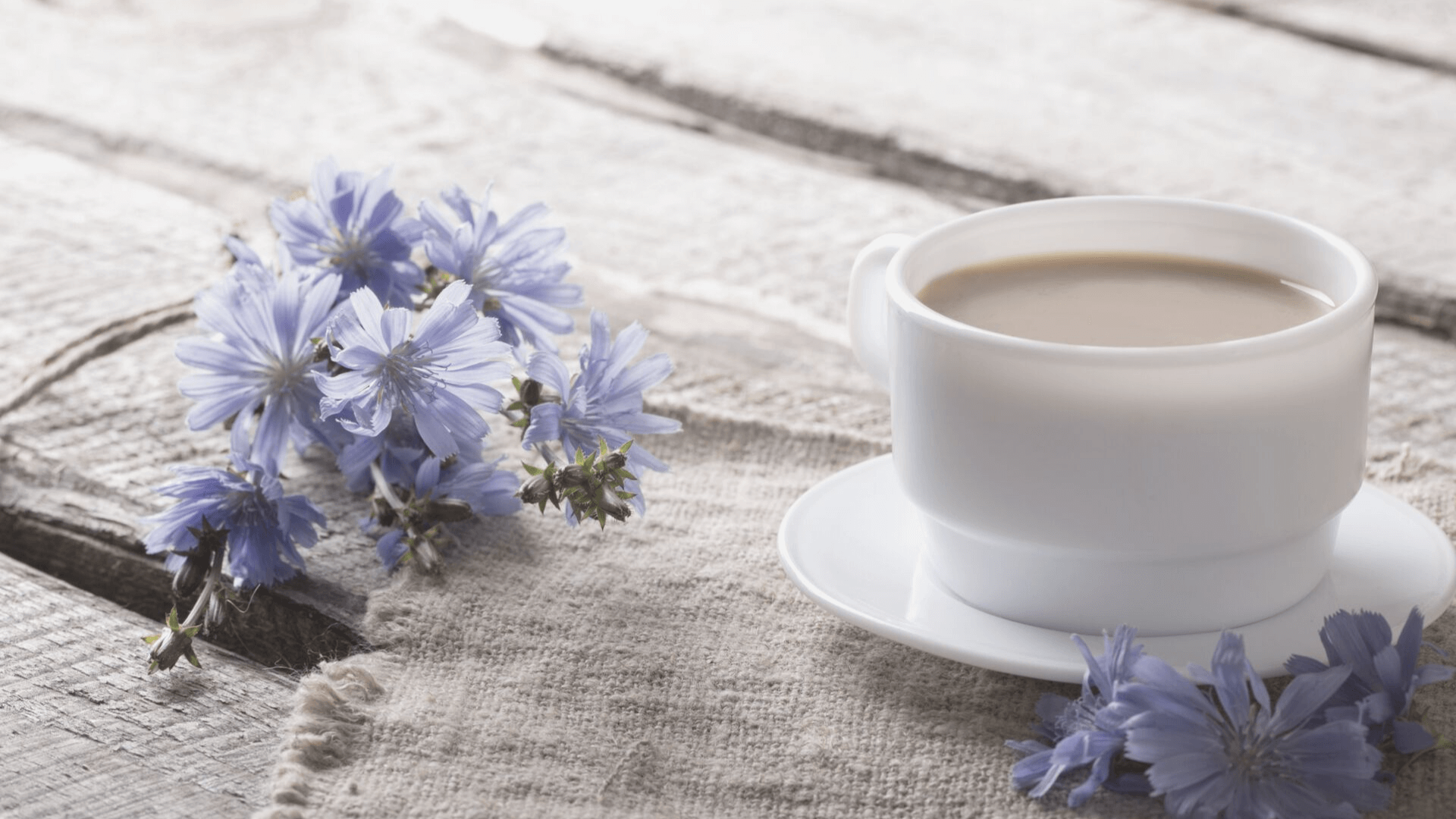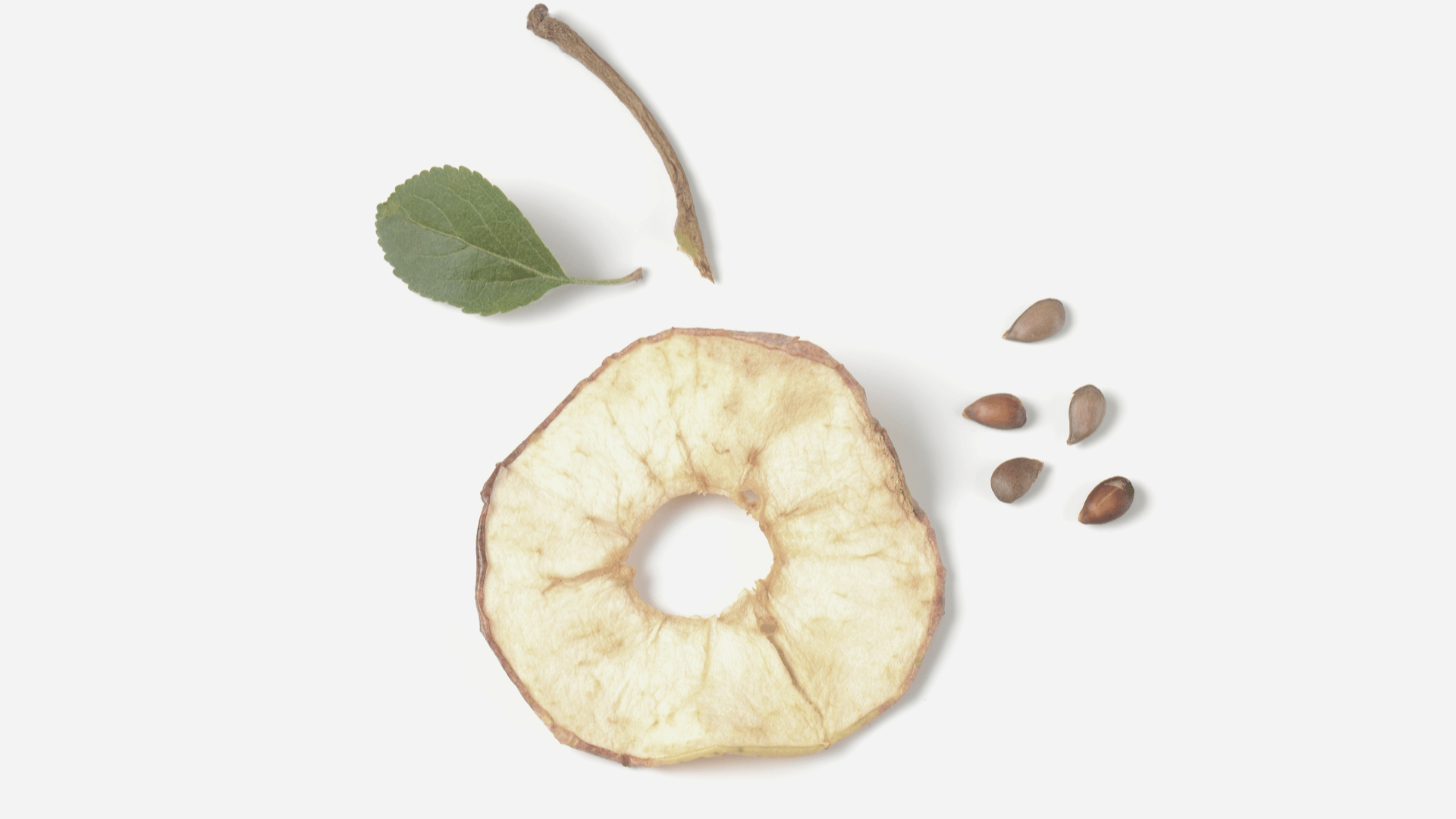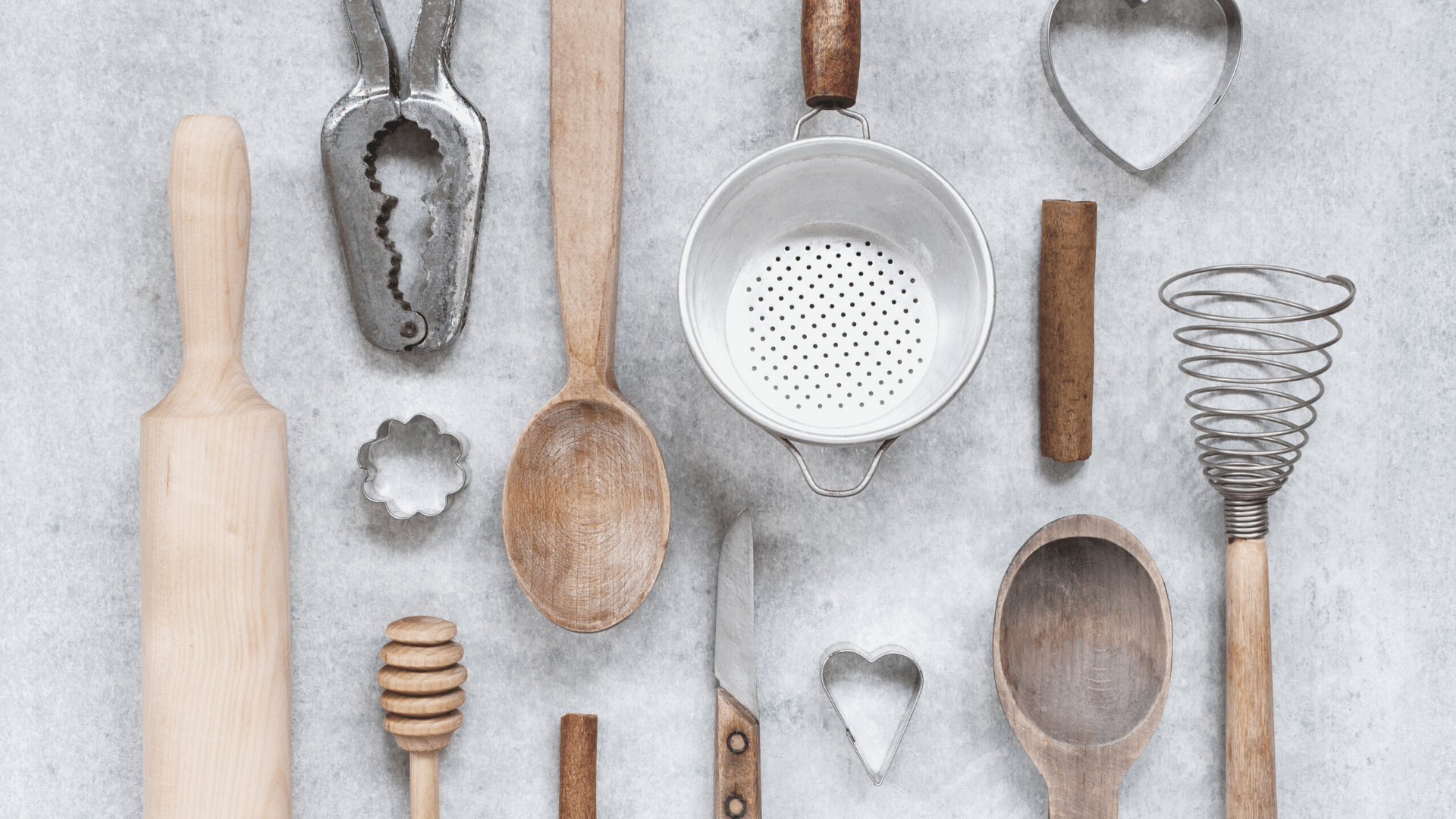This is actually what I believe for how to achieve optimal microbiome diversity.
In the last piece of this conversation, The Secret to a Healthy Gut Microbiome, I already told you what the secret is.
- More fiber
- Diet variety
And because I know that both of those seem scary to you right now (since your gut likely isn’t functioning at 100%), it’s hard to take that advice seriously.
So listen, you must not misunderstand what I’m talking about.
The Garden Analogy
Ever heard this analogy?
When a garden has been disrupted by weeds, the first thing you do is weed, and then you plant.
And this is exactly what I’ve been talking about and trying to teach and preach to you.
The garden analogy is simply gut health vs. gut healing.
Whereas, to weed is to heal; to plant is health.
So when I say, “how to achieve optimal microbiome diversity,” what I mean is…..
How can you heal your gut quicker in order to plant faster?
But first, let’s talk about the 2 secrets to a healthy gut microbiome in more detail.
More Fiber
The Hadza get 100 or more grams of fiber a day in their food, on average. We average 15 grams per day.
Depending on age and gender, the recommended daily fiber is anywhere from 25-30g. While this is nowhere near what the Hadza get (who have no guidelines to follow), we still fall short of the daily recommended amount.
“Fiber’s all that’s left at the very end of our digestive tract where these microbes live, so they’ve evolved to be very good at digesting it,” said Justin Sonnenburg, PhD. He also stated, “We’re beginning to realize that people who eat more dietary fiber are actually feeding their gut microbiome.'”
And why is that? Because the fiber we eat feeds billions of bacteria in our guts. Keeping them happy means our intestines and immune systems remain in good working order.
By using code AGUTSYGIRL at checkout HERE, you will save $110 off your own testing kit OR use code AGUTSYGIRL10 and go HERE to get $10% off 12 months on one of your monthly health plans.
Diet Variety
To be perfectly clear with “diet variety,” research currently discusses diet variety in terms of the few things we know the Hadza eat (or don’t, like waffles!). It also correlates diet variety many times with a plant-based, vegetable-rich diet.
For example, one study revealed that diets including 30 or more different types of fruit and vegetable each week were correlated with a much higher diversity in gut microbiota when compared with a diet with a more limited variety of plant matter (10 or fewer plant types).
Another study done on mice showed that switching from a low-fat, plant polysaccharide-rich diet to a high-fat, high-sugar “Western” diet shifted the structure of the microbiota within a single day. (This is because the large intestine loves polysaccharides.)
Additionally, the diet changed the representation of metabolic pathways in the microbiome, and altered microbiome gene expression.
And what about meat?
Meat does not contain fiber, and that’s one of the reasons it can be easy for those trying to heal their guts to tolerate. But furthermore, the Hadza people proved that meat can provide a whole host of varied benefits.
Surprisingly, the average Hadza microbiome is at its most diverse during the dry season, when their diet shifts to be heavy in meat. The researchers think that’s because the Hadza prepare their food immediately after capturing it, which means they’re more likely to consume all the microbes that lived inside that creature’s gut.
However, this way of meat preparation and eating is not the way you or I would do it on a daily basis. Because of that finding, though, it’s easier to understand why anyone would tell you to “reduce meat consumption” for better overall gut health.
If you understand the concept of a wild animal, untreated with any hormones, antibiotics, abuse (yes, this plays into it!), etc, then you understand just how different that slab of steak you’re enjoying from a random store, over-the-counter is.
How to Achieve Optimal Microbiome Diversity
Click HERE to save how to achieve optimal microbiome diversity for later.
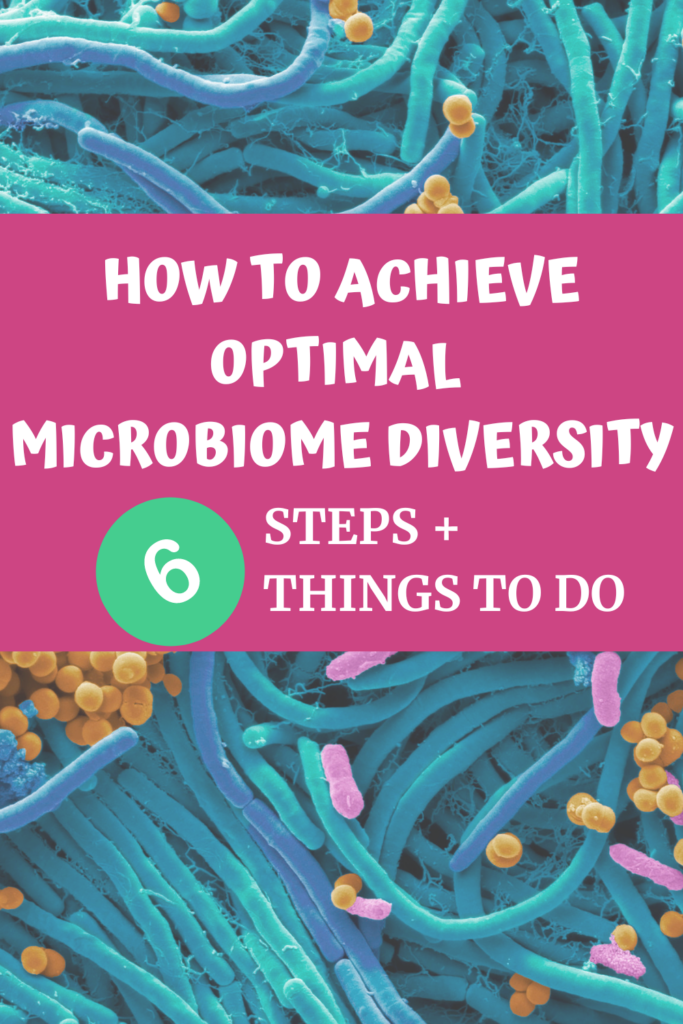
Okay, so now for the part you’ve been waiting for.
How to achieve optimal diversity is a process.
I’ve laid the pieces out, but where and how you start today is completely dependent upon your own current circumstances.
What I have laid out below is a compilation of personal experiences mixed with research.
Life happens, but your microbiome has the ability to quickly recover from anything and everything thrown at it. This resilience means changes within months, weeks, or even days.
In fact, the average lifespan of a bacterium in your microbiome is 20 minutes. How your microbiome was altered to begin with will determine the length of time it takes to rehabilitate a damaged microbiome.
1 – Weed First
If your gut needs to be healed, then you must first weed to fix that gut. Missing this critical step would be a huge mistake.
Just because the Hadza people have a diverse microbiome by doing x,y,z doesn’t mean you will.
Heading into the experiment, none of them had any (recordable or notable) gut issues.
There was never any mention of IBS, IBD, or even minor gut issues. And if you want my honest opinion, if you are in this stage, make sure you are weeding not hacking. In other words, get rid of the things you need to; do not overdo it, thereby ruining your garden even further.
If you’re not interested in following a templated diet, but instead want to learn to create your own based on your unique situation, then you’ll love my book, A Gutsy Girl’s Bible: a 21-day approach to healing the gut. In it, you’ll find 100+ Creations. Grab your copy on Amazon HERE.
Or, have this book at your fingertips instantly by downloading the PDF now.
2 – More Fiber
The research is very clear and consistent around fiber.
You don’t want to hear about it today because you don’t feel well, but there is no denying it.
I’m not going to push fiber in your face to make you hate it even more, but please know that for achieving an optimal microbiome diversity, consuming a lot of fiber will be key.
3 – Choose Variety
The more varied the diet, the better the chance for microbial diversity.
It makes perfect sense. If you’re only eating kale, zucchini, avocado, and blueberries, how will you reap the benefits contained in artichokes, oranges, raspberries, pineapple, asparagus, spinach, etc?
When the Hadza people ate, it was always whatever they could find (I mean, would you actually want to seek out, kill, and then eat porcupine?)
This meant they ate seasonally. I didn’t put “choose seasonality” as it’s own point on this list because that’s really hard and technical for a lot of people. In the natural world, everyone talks about it.
But I’m over here in the real world. It’s much more difficult. And I personally believe it’s better to get more than to choose less simply because it’s “not in season.”
4 – Clean up the meat
For many, meat is a staple during the weeding, gut-healing phase.
I have been there, and I understand it more than you know. But you must know that no matter the reason for meat consumption, make sure it’s as high-quality as possible.
Research proves it does matter. If you want the truth, this is part of the reason I don’t eat as much meat anymore.
I’m picky about it now. You should be, too.
4 – Take a Probiotic
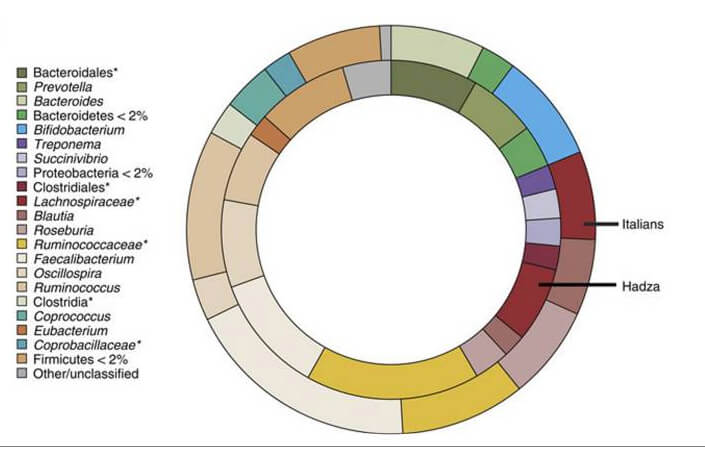
Look at all the different bacterial strains the Hadza people get through food.
You and I won’t be able to achieve this from food alone likely.
This is another pull for a high-quality probiotic.
While a probiotic isn’t going to replace what their diet did, it can help.
Don’t get caught up with more strains and species are better, though. That’s a myth; choose quality (read more about probiotic myths HERE).

5 – Eat your prebiotics
Prebiotics are a source of food that the probiotics live off of.
That’s right, prebiotics feed probiotics.
Read about the difference between pre- and probiotics HERE, and examples of food for each.
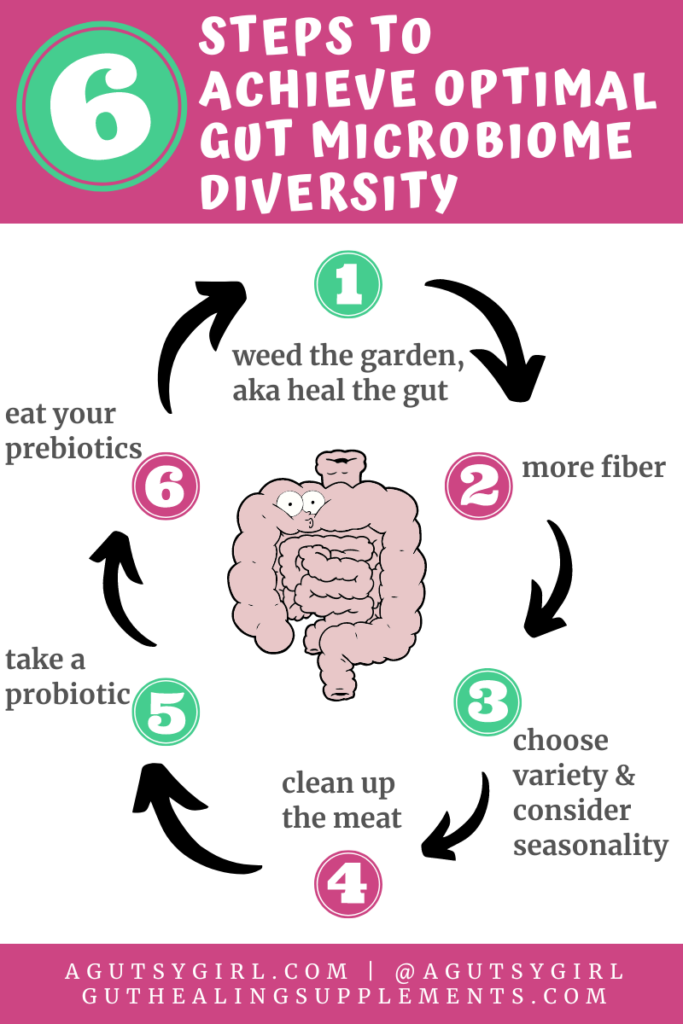
Fact remains, we live in a civilized place where the microbiome is compromised daily.
Access to processed foods is easier (and more cost efficient oftentimes) than the alternative.
We are clearly not the Hadza people, which plays into the reasons for why many of us will be stuck in the weeding phase for a long time.
And yet, still, I believe whole-heartedly that there is hope for you – for us.
My job as A Gutsy Girl is to be your number 1 cheerleader, to help you heal by providing resources and information. And then to give you the inspiration, resources, courage and power to move upwards and onwards.
Let’s make a mighty army out of your microbiome! Okay, eventually. Maybe not today.
Sources: HERE, HERE, HERE, HERE, HERE, HERE, HERE, and HERE.
Ready for more? Get instant access to all my resources for just $49!

If you enjoyed this post, you might also like:
Xox,
SKH
🤰 bloating be gone! weight loss through optimal gut health for women
💃ʜᴇᴀʟ ʏᴏᴜʀ ɢᴜᴛ. ʜᴇᴀʟ ʏᴏᴜʀ ʟɪfe.
🫶🏻 founder gutbyome.com


